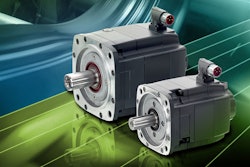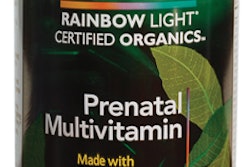• On the new technology front, if your packaging operation includes bottling, keep an eye on a new sanitizing process from an Irish firm called Trustwater (www.trustwater.com). This is an electrochemical process that converts water and salt to produce two solution streams simultaneously. One is a high-pH detergent solution and the other a powerful sanitizer. These solutions are extremely effective and can replace all traditional chemical detergents and sanitizers used in beverage production. By enabling Viking Coca Cola of Minnesota to lower the amount of water used to produce their products, Viking is playing its part in helping Coca-Cola achieve its goal of a 20% water reduction by 2012. The Trustwater process was launched at Drinktec last September and the Viking Coca Cola installation is the first in North America.
• Zipper and slider reclosures have come on strong in the past decade or so and are now found in all kinds of product categories and sales channels. A new reclosure feature from Aplix (www.aplix.com) uses self-mating micro hooks (think Velcro) instead of a zipper profile or slider. A key advantage is ease of closure, since the alignment precision required is minimal. Milk Link, a dairy farmer-owned co-operative in the U.K. is using this reclosure feature, made of a food-grade heat-sealable polyethylene, on flexible bags of its various cheese brands. "The launch of Grip Strip across the U.K. offers a new global dairy first, a 'gold standard' in cheese packaging," says Hamish Renton, Milk Link's marketing director.
• Finally, kudos to Procter & Gamble for its recent efforts to expand the range of materials suitable for injection stretch blow molding. PET, the work horse in ISBM, is a wonderful material. But PET doesn't lend itself to household chemicals, especially those containing bleach, because of stress cracking issues. Rather than accepting as an immutable given that only extrusion blown high-density polyethylene would ever be suitable for bleach-containing household detergents, P&G pressed the limits of ISBM technology and came up with a real breakthrough: bottles that are stretch blow molded from injection molded polypropylene preforms. The 500-mL, 1-L, and 2-L bottles—first for P&G's Ariel brand Stain Release in Europe and a few months later in the U.S. for P&G Tide brand Stain Release--were produced using a new PP resin from LyondellBasell (www.lyondellbasell.com) called Stretchene. Also playing a key role in the R&D behind this breakthrough was the European subsidiary of Plastic Technologies Inc. (wwwplastictechnologies.com), a specialist in high-performance packaging for the food and beverage, household product, and health care industries. Alpla (www.alpla.com) contributed significantly, as well, by executing the injection molding and stretch blow molding expertise without which the innovative bottle could not have made its European debut. Patrick Esse, research fellow at P&G's Global Packaging & Device Development R&G group in Brussels, describes the motivation behind this initiative.
"The stretching process that is at the heart of ISBM at least doubles the flex modulus, which improves performance properties and lets you use less resin. Also, it's a conversion technology that gives you very nice aesthetic effects, not just transparency but shine. And in the case of a colored bottle, you can magnify that shine because the colorant that gives the bottle its color is very, very vivid. Extrusion blown HDPE, by comparison, can be a bit subdued. Third, with ISBM you get better control of the neck finish because the bottle is being blown from an injection molded preform. And finally, the ISBM converting platform is not supplier owned. You can develop a container and roll it out globally, as we did with these Stain Release bottles. That is not the case with containers that are extrusion blow molded. If you move a bottle from one supplier in Europe to another one in the U.S., considerable development work is required."
• Zipper and slider reclosures have come on strong in the past decade or so and are now found in all kinds of product categories and sales channels. A new reclosure feature from Aplix (www.aplix.com) uses self-mating micro hooks (think Velcro) instead of a zipper profile or slider. A key advantage is ease of closure, since the alignment precision required is minimal. Milk Link, a dairy farmer-owned co-operative in the U.K. is using this reclosure feature, made of a food-grade heat-sealable polyethylene, on flexible bags of its various cheese brands. "The launch of Grip Strip across the U.K. offers a new global dairy first, a 'gold standard' in cheese packaging," says Hamish Renton, Milk Link's marketing director.
• Finally, kudos to Procter & Gamble for its recent efforts to expand the range of materials suitable for injection stretch blow molding. PET, the work horse in ISBM, is a wonderful material. But PET doesn't lend itself to household chemicals, especially those containing bleach, because of stress cracking issues. Rather than accepting as an immutable given that only extrusion blown high-density polyethylene would ever be suitable for bleach-containing household detergents, P&G pressed the limits of ISBM technology and came up with a real breakthrough: bottles that are stretch blow molded from injection molded polypropylene preforms. The 500-mL, 1-L, and 2-L bottles—first for P&G's Ariel brand Stain Release in Europe and a few months later in the U.S. for P&G Tide brand Stain Release--were produced using a new PP resin from LyondellBasell (www.lyondellbasell.com) called Stretchene. Also playing a key role in the R&D behind this breakthrough was the European subsidiary of Plastic Technologies Inc. (wwwplastictechnologies.com), a specialist in high-performance packaging for the food and beverage, household product, and health care industries. Alpla (www.alpla.com) contributed significantly, as well, by executing the injection molding and stretch blow molding expertise without which the innovative bottle could not have made its European debut. Patrick Esse, research fellow at P&G's Global Packaging & Device Development R&G group in Brussels, describes the motivation behind this initiative.
"The stretching process that is at the heart of ISBM at least doubles the flex modulus, which improves performance properties and lets you use less resin. Also, it's a conversion technology that gives you very nice aesthetic effects, not just transparency but shine. And in the case of a colored bottle, you can magnify that shine because the colorant that gives the bottle its color is very, very vivid. Extrusion blown HDPE, by comparison, can be a bit subdued. Third, with ISBM you get better control of the neck finish because the bottle is being blown from an injection molded preform. And finally, the ISBM converting platform is not supplier owned. You can develop a container and roll it out globally, as we did with these Stain Release bottles. That is not the case with containers that are extrusion blow molded. If you move a bottle from one supplier in Europe to another one in the U.S., considerable development work is required."


























